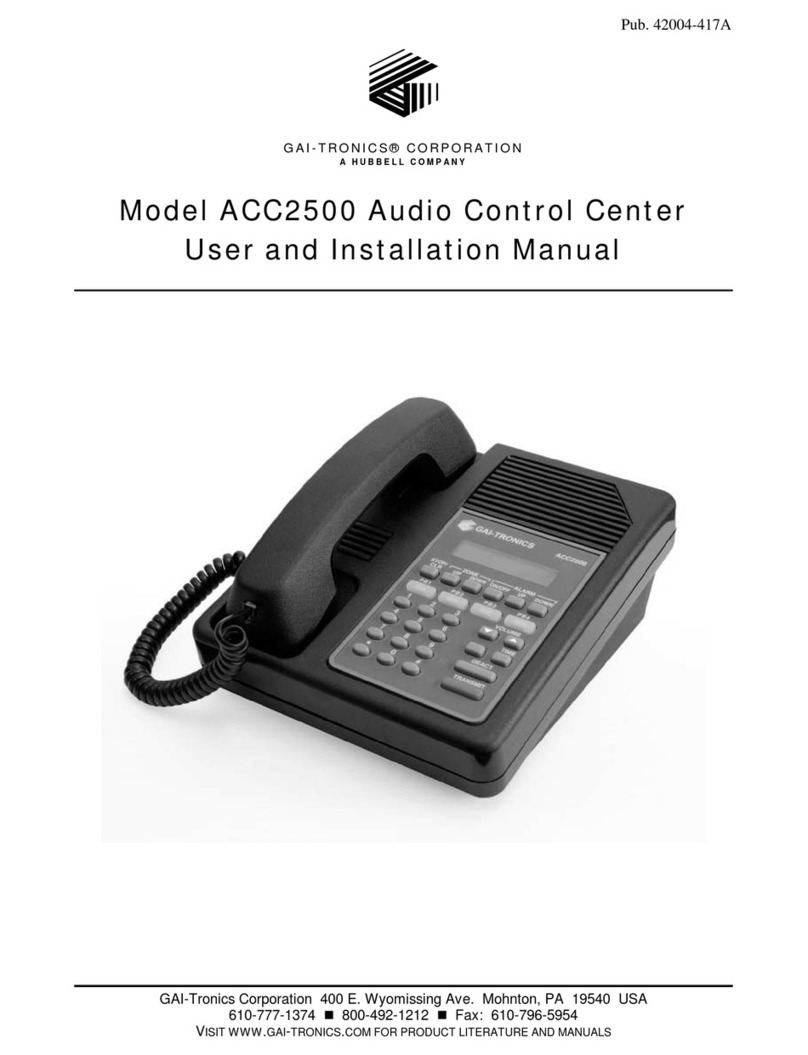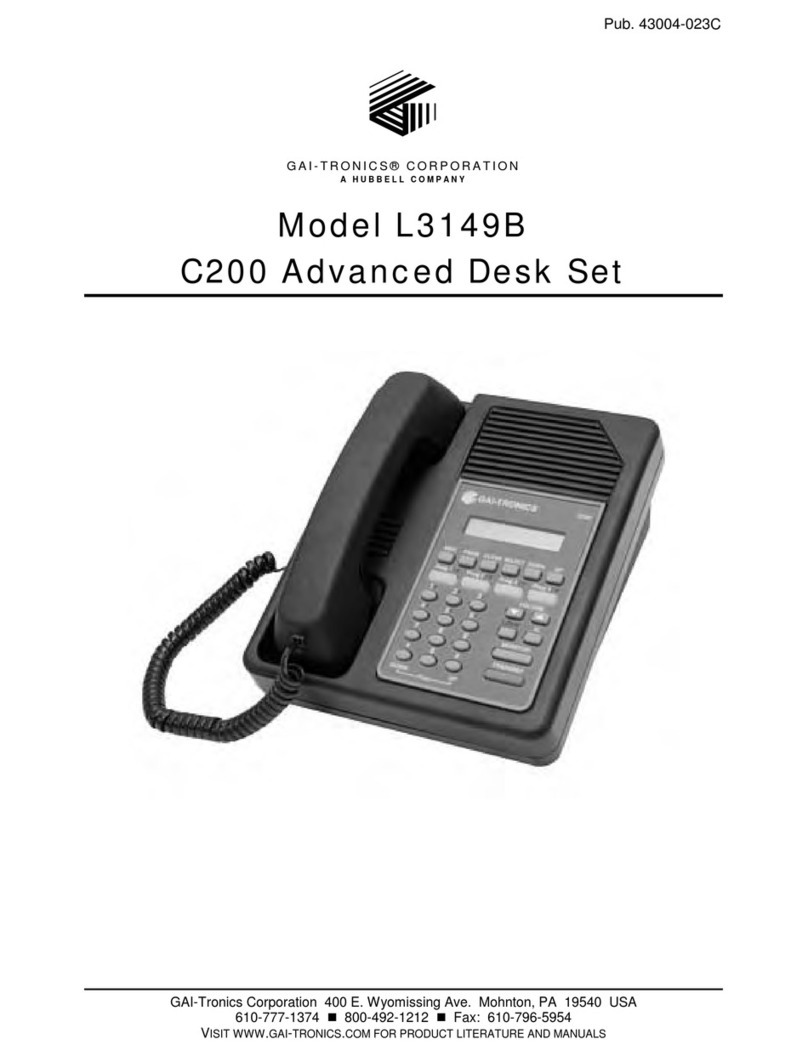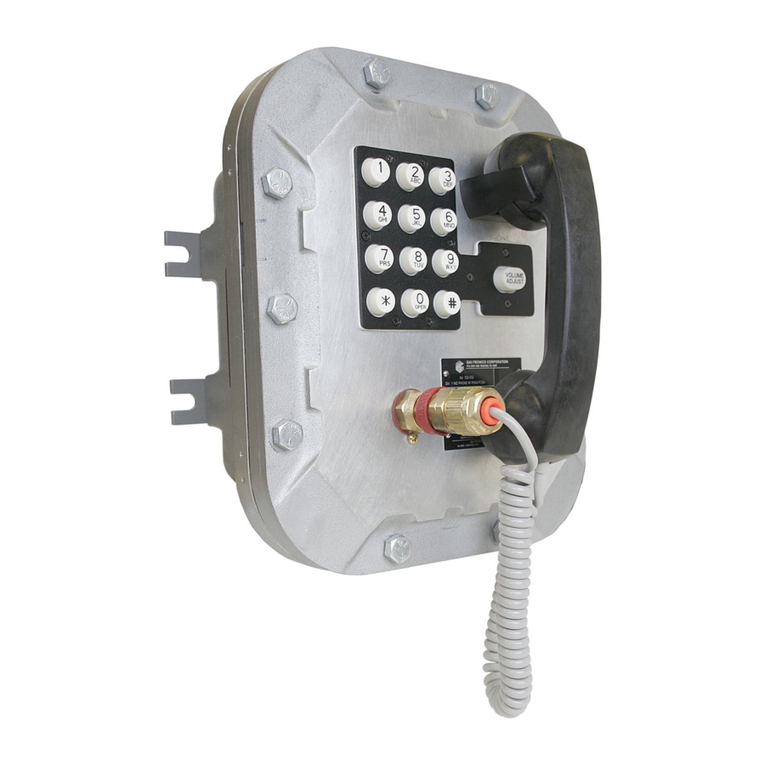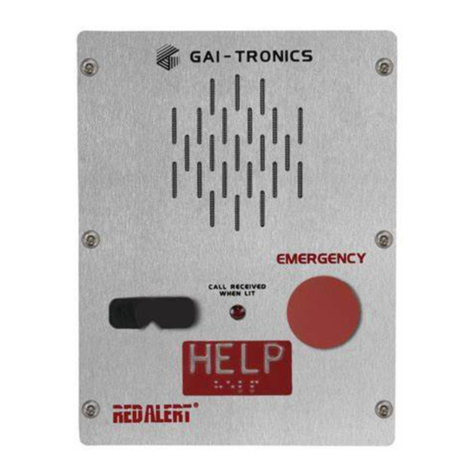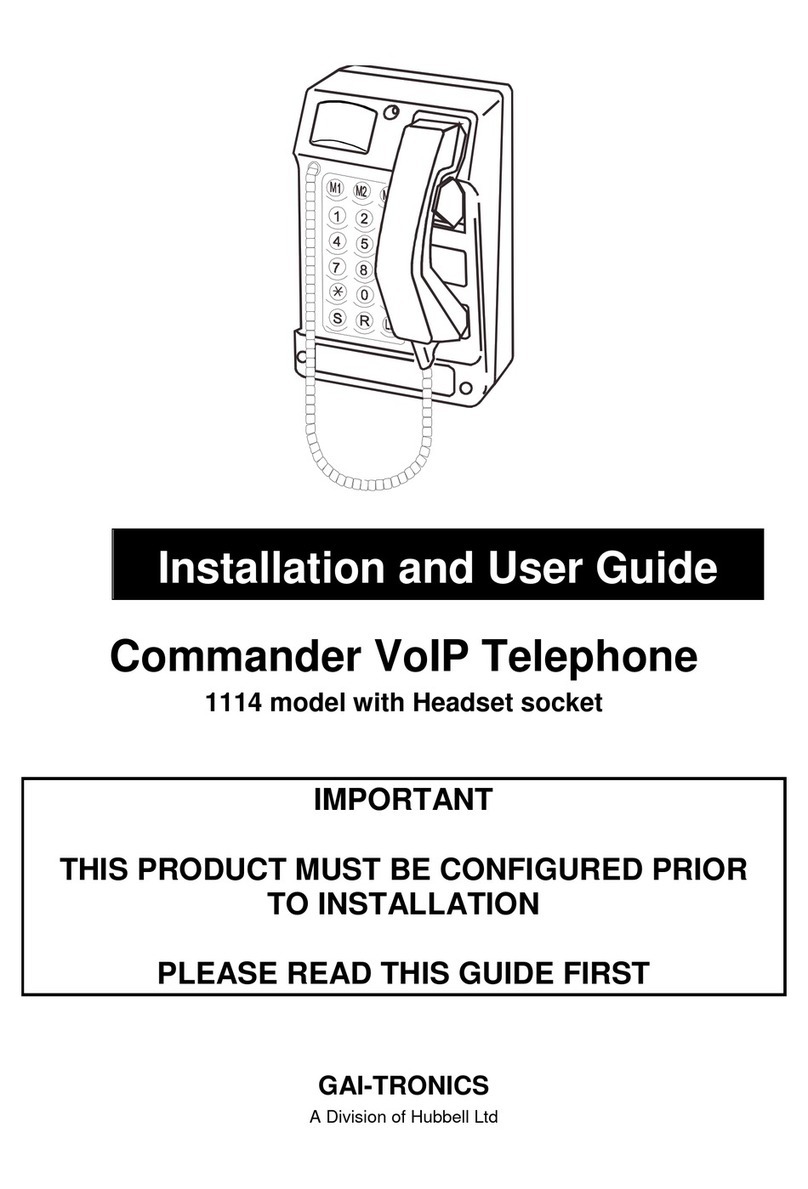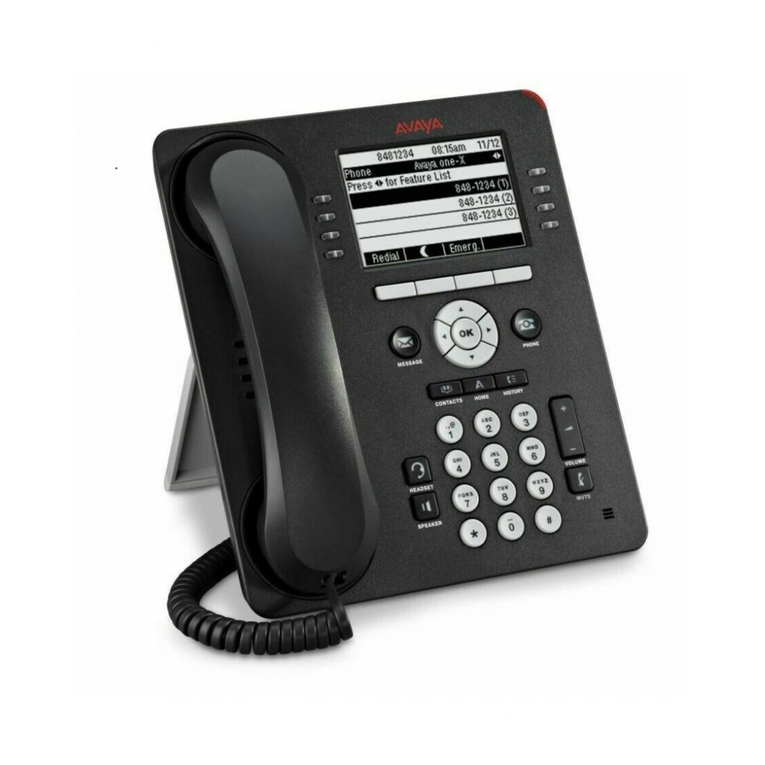
Pub. 42004-471B
GAI-Tronics Corporation 400 E. Wyomissing Ave. Mohnton, PA 19540 USA
610-777-1374 800-492-1212 Fax: 610-796-5954
VISIT WWW.GAI-TRONICS.COM FOR PRODUCT LITERATURE AND MANUALS
GAI-TRONICS® CORPORATION
A HUBBELL COMPANY
Hands-free WiFi VoIP Telephones
TABLE OF CONTENTS
Confidentiality Notice.....................................................................................................................1
Product Overview............................................................................................................................1
Models......................................................................................................................................................1
System Requirements and Limitations.................................................................................................2
Tips for VoIP Subscribers......................................................................................................................3
Features and Functions ..........................................................................................................................3
Operation.........................................................................................................................................4
Placing an Autodial Emergency Call ....................................................................................................4
Models 393-800A, 393AL-800A, 394AL-802A, 397-800A, 397-801A & 398-802A .........................................4
Placing an Autodial Non-Emergency Call............................................................................................4
Model 397-801A...................................................................................................................................................4
Placing a General Telephone Call.........................................................................................................4
Models 394AL-802A, 398-801A, and 398-802A .................................................................................................4
Receiving a Call.......................................................................................................................................4
Multicast Broadcast................................................................................................................................5
Monitoring and Reporting.....................................................................................................................5
Installation ......................................................................................................................................6
General Information...............................................................................................................................6
Safety Guidelines.....................................................................................................................................6
Station Placement....................................................................................................................................6
Security Hardware..................................................................................................................................6
Conduit Installation Details (Surface-Mount Models)........................................................................7
Models 393-800A, 393AL-800A, and 394AL-802A..............................................................................8
Model 397-80xA and 398-80xA Telephones........................................................................................10
Setup..............................................................................................................................................13
Field Wire installation..........................................................................................................................13
Power ..................................................................................................................................................................13
Network ..............................................................................................................................................................13
Antenna...............................................................................................................................................................13
I/O.......................................................................................................................................................................15
